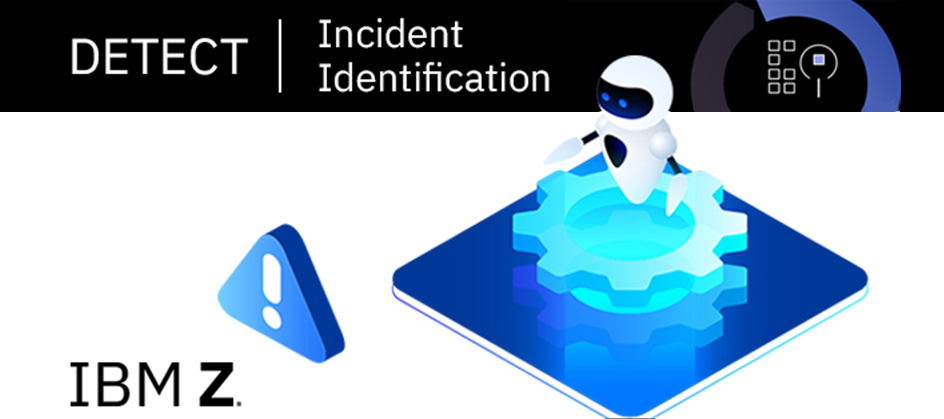Organizations are drawn to the promise of AIOps to leverage AI-driven Intelligence and automation to make quick and accurate decisions to maintain resiliency. AIOps uses artificial intelligence to simplify IT operations management and accelerate and automate problem resolution in complex modern IT environments.
A recent blog by @Sanjay Chandru set the stage for guiding you on Best practices for taking a hybrid approach to AIOps. We learned that a key capability of AIOps is detection. Accurately detecting issues and anomalies across hybrid cloud infrastructure and applications empowers IBM Z IT ops teams and accelerates the AIOps journey. Application performance management provides faster isolation of problems in hybrid application environments inclusive of IBM Z with end-to-end tracking visibility.
Today, most organizations are transitioning from a traditional infrastructure of separate, static physical systems to a dynamic mix of on-premises, managed cloud, private cloud, and public cloud environments, running on virtualized or software-defined resources that scale and reconfigure constantly.
Applications and systems across these environments generate a tsunami of data that keeps growing. In fact, Gartner estimates that the average enterprise IT infrastructure generates two to three times more IT operations data every year. Traditional domain-based IT management solutions can’t keep up with the volume. They can’t intelligently sort the significant events out of the crush of surrounding data. They can’t correlate data across different but interdependent environments. And they can’t provide the real-time insight and predictive analysis IT operations teams need to respond to issues fast enough to meet user and customer service level expectations.
Enter AIOps, which provides visibility into performance data and dependencies across all environments, analyzes the data to extract significant events related to slow-downs or outages, and automatically alerts IT staff to problems, their root causes, and recommended solutions.
What are we hearing from our customers?
The most effective way to understand the customer need is to draw from your own life experience. Think back to the last time you had a poor experience with a digital service or application. Did you gripe about the matter with family and friends or post about it on social media to warn others? Maybe the experience was so bad you started looking into other service providers or stopped supporting that company altogether.
The digital marketplace has increased competition by several orders of magnitude which has shifted the balance of power to consumers. In every vertical, there are a variety of options for customers to choose from meaning one bad experience can be enough to drive a switch. Customers are more sensitive to slowdowns and outages than ever before, and even just hearing about these events in the news can influence future decision making. Additionally, we’re increasingly eager to share our negative brand experiences with family, friends, and peers in-person and online.
Enterprises are making it their number one priority to protect the customer’s digital experience because it has wide-ranging impacts on their business, but increasing customer expectations are not the only source of growing pressure on IT operation teams. As enterprises move quickly to enhance their digital experiences to keep up with competition, the technology stack that must be maintained grows larger and more complex. The adoption of new exciting technologies like containers, orchestrators, microservices, serverless computing, and more all bring with them unique monitoring challenges. Enterprises are embracing agile software development practices meaning new code can be pushed to production on a weekly, daily, or even hourly basis. All this means exciting innovations for customers, but those who are responsible for monitoring all this have a daunting task at hand.
How are customers responding?
Organizations of all sizes are embracing application performance management (APM) to help meet customer expectations and manage their internal complexity. Full transparency allows for all teams to operate from the same set of information when troubleshooting a problem or making a change. The tools are easy to roll out given their lightweight agent structure making them popular with IT operations teams. More and more customers are making APMs a tool in their DevOps arsenal to test code in an integrated fashion before it hits production.
The adoption of APM solutions by enterprises has been ongoing for some time since they address a growing, business-critical need. To reap the full benefits of an APM tool, an organization must have full application visibility with end-to-end tracing of transactions. When customers deploy an APM that surfaces an incomplete view of their applications, they are unable to avoid the most painful problems that the tool was brought in to solve (finger pointing, war rooms, costly service interruptions). Unfortunately, over 85% of the market-leading APMs identified by Gartner lack any support for IBM Z out of the box. As IBM Z continues to play a growing role in customers’ hybrid cloud journeys, enterprises must have a way to seamlessly include the platform in their organization-wide monitoring strategy.
How can IBM help?
We are incredibly interested in ensuring IBM Z can participate in the cutting-edge technologies and tools are customers are using and loving. We recognize the unique position we’re in to provide the integration that is optimized for the IBM Z platform. Application performance management tools that try to extend their solutions to IBM Z have little in-house talent that can build and support a robust integration. IBM builds the hardware, operating system, and middleware for the platform, so we are best positioned to create and support an integration with these various technology vendors.
Over 70% of enterprises have more than 1 APM tool in-house. The IBM solution ensures that you only need one product to enable IBM Z visibility in your various APMs. Our current support includes surfacing Z data in AppDynamics and Instana, but our eventual goal is to offer Z support for all market-leading APMs. This gives customers the assurance that even if your company’s APM strategy changes, you won’t need to purchase or install additional products for Z.
We are regularly meeting with customers about extending their APM solution to include IBM Z, and we have heard that any additional tooling must add little to no additional cost. Every component of IBM’s solution is designed with overhead in mind. Whereas competitors in this space collect all, even unrelated, transaction data on Z, the IBM solution uses strategic data collection methods to trace the transactions that matter. The IBM solution avoids doing the heavy lifting of stitching collected data back together on Z and instead completes that work off-platform.
One of the world’s largest banks with massive scale requirements set out on a journey several years ago to deliver more engaging digital experiences by transforming their traditional , disconnected architecture into something more micro-services based. The bank chose AppDynamics as their APM partner – but lacked visibility into their IBM Z estate, which interfered with their transformation efforts.
The bank chose IBM Z APM Connect – currently the only standalone offering that allows customers to feed Z data to various APM platforms. This allowed them to keep the APM of their choice while gaining visibility into their Z data within the context of their hybrid business applications. The bank now has a true mobile-to-mainframe view of their critical business applications, so war rooms are no longer needed to triage problems, saving hours of employees’ time as well as the costs that stem from disrupted customer experiences.
Recently the bank’s application team was alerted by their APM that there was a projected slowdown in their business-critical banking application potentially impacting millions of customers. They used AppDynamics + Z APM Connect to identify the location of the issue that was stemming from Z. The appropriate Z SMEs inside their organization addressed the issue in their dedicated Z monitoring tools before customers were even impacted, saving the bank valuable time and money.
What are my next steps?
Depending on where you are on your journey to adopting more of these AIOps best practices we are sharing the following resources to obtain a deeper understanding:
- To assess your current stage of AIOps maturity and identify action oriented next steps for adopting more AIOps best practices, inquire about the 15-minute online AIOps Assessment for IBM Z.
- Join the AIOps on IBM Z Community to follow this blog series about best practices for taking a hybrid approach to AIOps
- And finally, to research our IBM Z products that are implementing AIOps technologies to improve operational resiliency visit our product portfolio page.
Originally published on the AIOps on IBM Z Community Blog









0 Comments